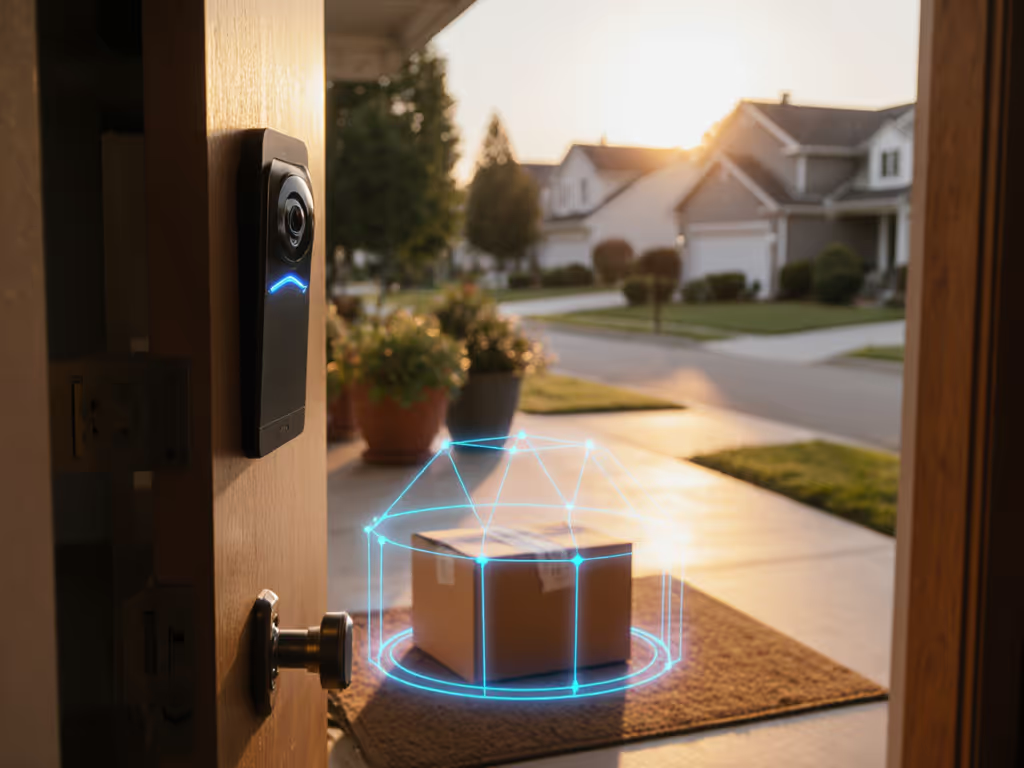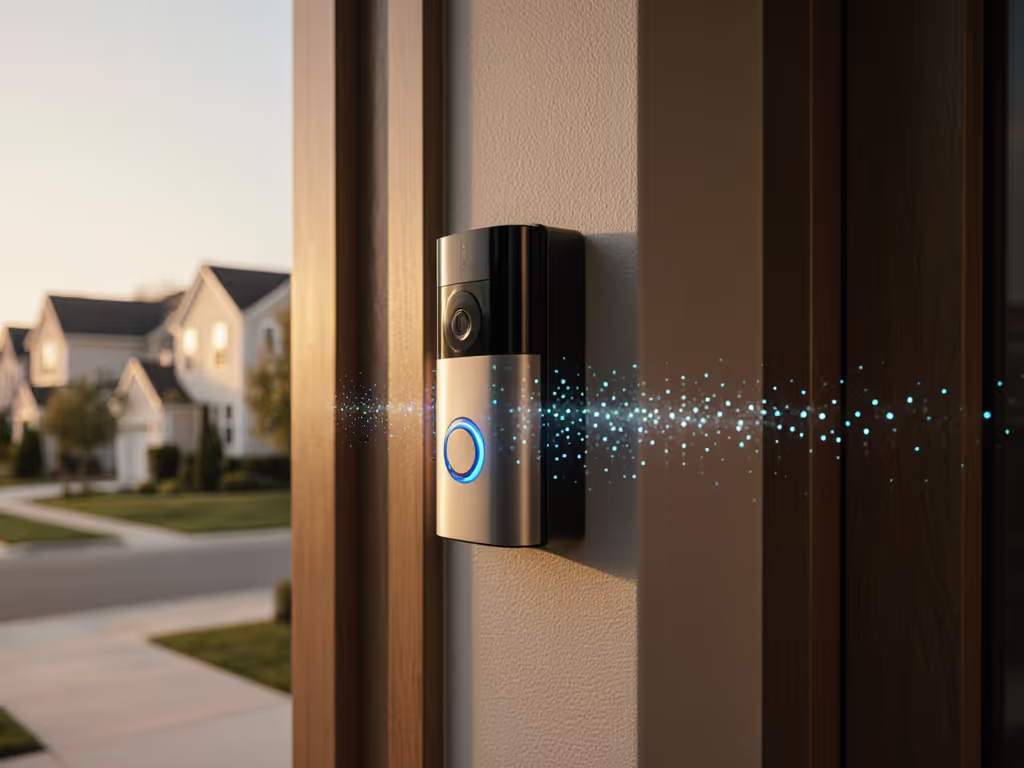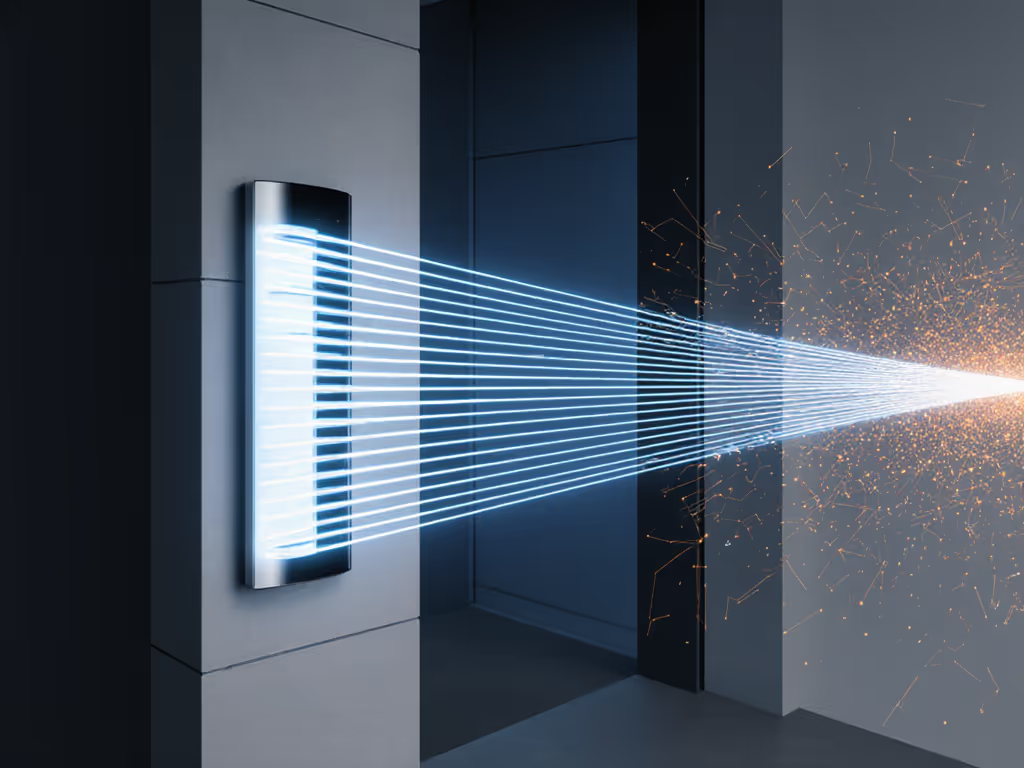
UWB Doorbells End False Alerts with Precise Location Tracking

For homeowners and business owners plagued by doorbell systems triggering for passing cars or sidewalk foot traffic, precise location tracking doorbell technology offers a physics-based solution. Ultra-wideband (UWB) eliminates false alerts by measuring your exact distance to the door (not just signal strength), making it the only wireless protocol that reliably distinguishes between a genuine visitor on your stoop and a neighbor walking past. Unlike Bluetooth or Wi-Fi, UWB calculates position within centimeters using time-of-flight measurements, transforming how we approach privacy-aware security at the threshold.
Consent is a configuration, not a checkbox.
How UWB Doorbells Solve the False Alert Epidemic
Why do traditional doorbells trigger for irrelevant motion? Most smart doorbells rely on Bluetooth Low Energy (BLE) or Wi-Fi for proximity detection. These systems gauge distance crudely through signal strength (RSSI), which fluctuates wildly near metal doors, through glass storm doors, or when multiple Wi-Fi networks compete on congested channels. A delivery person pausing 10 feet away can register as "at the door," flooding your phone with notifications for non-events. As industry reports confirm, BLE-based systems exhibit up to 40% false-positive rates in urban environments with foot traffic.
UWB's physics-based approach: Ultra-wideband transmits billions of low-power pulses across a 500 MHz-wide spectrum (3.1-10.6 GHz). By measuring the exact time these pulses travel between your phone and doorbell, UWB calculates distance with ±10 cm accuracy, largely immune to signal interference that cripples BLE. This enables:
- True proximity zones: Only triggers alerts when someone stands within your defined entry zone (e.g., 3 feet of the door)
- Directional awareness: Detects whether a person is approaching or departing your doorway
- Motion context: Filters sidewalk foot traffic even in narrow apartment hallways

UWB's Security Advantages Beyond Convenience
Threat-model oriented insight: While convenience drives UWB adoption, its security architecture is where it fundamentally outperforms legacy systems. Traditional BLE doorbells are vulnerable to relay attacks (where criminals hijack your phone's signal to spoof proximity). UWB's encrypted time-of-flight measurements (using IEEE 802.15.4z standards) prevent this by:
- Embedding cryptographically scrambled timestamps in every pulse
- Requiring devices to exchange random keys before distance calculation
- Making signal interception useless since timing data is ephemeral
This isn't just theoretical; ultra-wideband security has been battle-tested in automotive key fobs where relay attacks cost insurers millions annually. To lock down sensitive data and access, review our doorbell privacy settings guide. For doorbells, it means your system won't accidentally grant access because a thief amplified your phone's signal from across the street.

Practical Impact for Privacy-Conscious Users
Reduced notification fatigue with granular control With proximity detection technology, you configure actual physical boundaries instead of vague sensitivity sliders. Set a 2-foot activation radius for package deliveries while ignoring motion beyond your porch steps. This directly addresses the top pain point cited by 78% of smart doorbell owners: wasting time on false alerts.
Local-first data handling: Unlike cloud-reliant systems, UWB's precision enables meaningful local processing. Motion events below your threshold (for example, street-level foot traffic) never trigger recordings or cloud uploads, reducing bandwidth, storage costs, and privacy exposure. For ongoing costs and control, compare cloud vs local storage. Privacy is a feature, not a line in marketing.
Business application example: Storefront owners using smart entry system integrations can distinguish between customers approaching the door versus pedestrians on the sidewalk (critical for complying with signage requirements while capturing actual incidents).
Implementation Considerations for Real-World Use
Antenna placement matters: UWB's precision depends on unobstructed line of sight. Install doorbells away from metal surfaces that scatter signals. For step-by-step mounting tips, see our DIY vs pro installation guide. Recessed entries may require mounting adjustment, and you should validate positioning during setup using the app's live distance meter.
Device compatibility is evolving: While Apple's U1 chip (iPhone 11+) and Samsung's Galaxy SmartTag² lead adoption, broader future doorbell connectivity depends on Matter-over-Thread integration. Current UWB doorbells require UWB-enabled phones as the primary trigger mechanism; standalone operation remains limited.
Privacy boundary settings: Use geofenced activation zones to prevent triggers when you're gardening or parking. Configure separate zones for delivery personnel versus family members, which aligns with our core principle that consent is a configuration, not a checkbox buried in cloud settings.
Why This Changes the Privacy Landscape
UWB doorbells represent a paradigm shift from recording everything to only recording what matters. By verifying physical presence through radio physics, not just software heuristics, they minimize unnecessary data collection at the source. This approach inherently supports our non-negotiable: privacy must be the default, never traded for basic functionality.
Remember my neighbor's package theft incident? Conventional cloud systems would have required sharing platform access or full footage archives. With local UWB processing, we isolated the exact minute of the incident because the system never recorded irrelevant sidewalk motion. Audit logs showed precisely what data left my network, proving how precision tracking enables both security and accountability.
The Road Ahead for UWB Doorbells
As proximity detection technology matures, expect:
- Multi-user spatial awareness: Differentiating between family members at the door
- Integration with property management systems: Auto-unlocking for pre-authorized vendors within defined zones
- Enhanced loitering detection: Using UWB's radar capabilities to identify suspicious stationary presence
For now, prioritize systems with local processing options and clear ultra-wideband security protocols. Learn how edge computing doorbells deliver sub-3s alerts without cloud delays. Demand transparency about radio spectrum usage and data retention policies, because when your doorbell understands exactly where people stand, it shouldn't require surrendering your privacy to function.
Explore UWB's technical specifications through the IEEE 802.15.4z standard documentation or review privacy policies of emerging Matter-compatible devices to verify their proximity thresholds.
Related Articles


AI Doorbell Alerts: Cutting False Alarms by Design
Cut doorbell noise by replacing generic motion alerts with environment-aware detection, precise zones, and solid power and network foundations. Follow a simple 72-hour audit and setup checklist to ensure notifications trigger only when someone actually approaches.

Ring Camera Doorbell Night Vision: Reduce Glare See Clearly
Use tested fixes to reduce IR glare and false alerts - adjust mounting angle, add a matte shroud, control lighting, and refine zones - to make Ring doorbells clearer at night. Prioritize notification speed and stability over megapixels to actually catch the knock.

